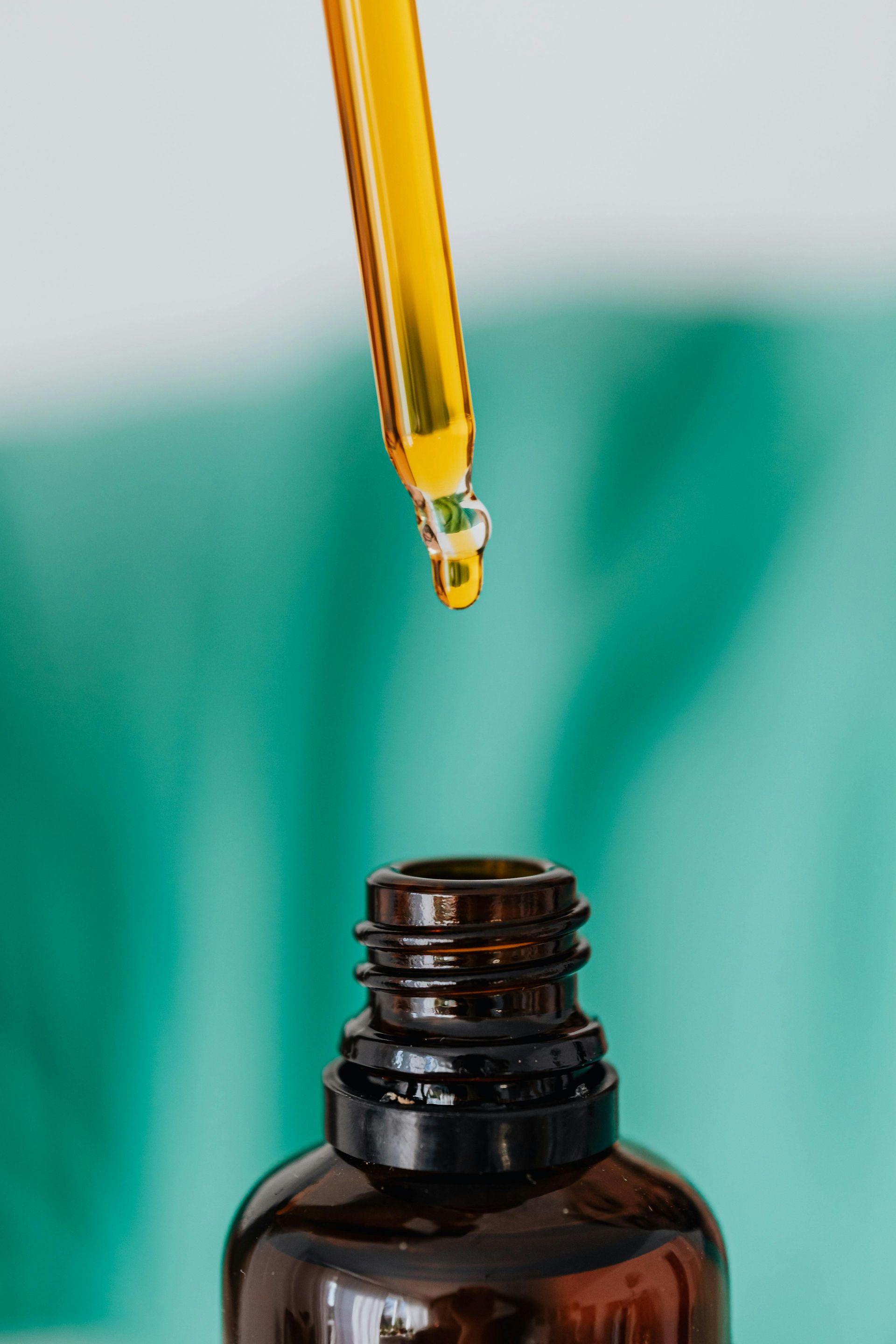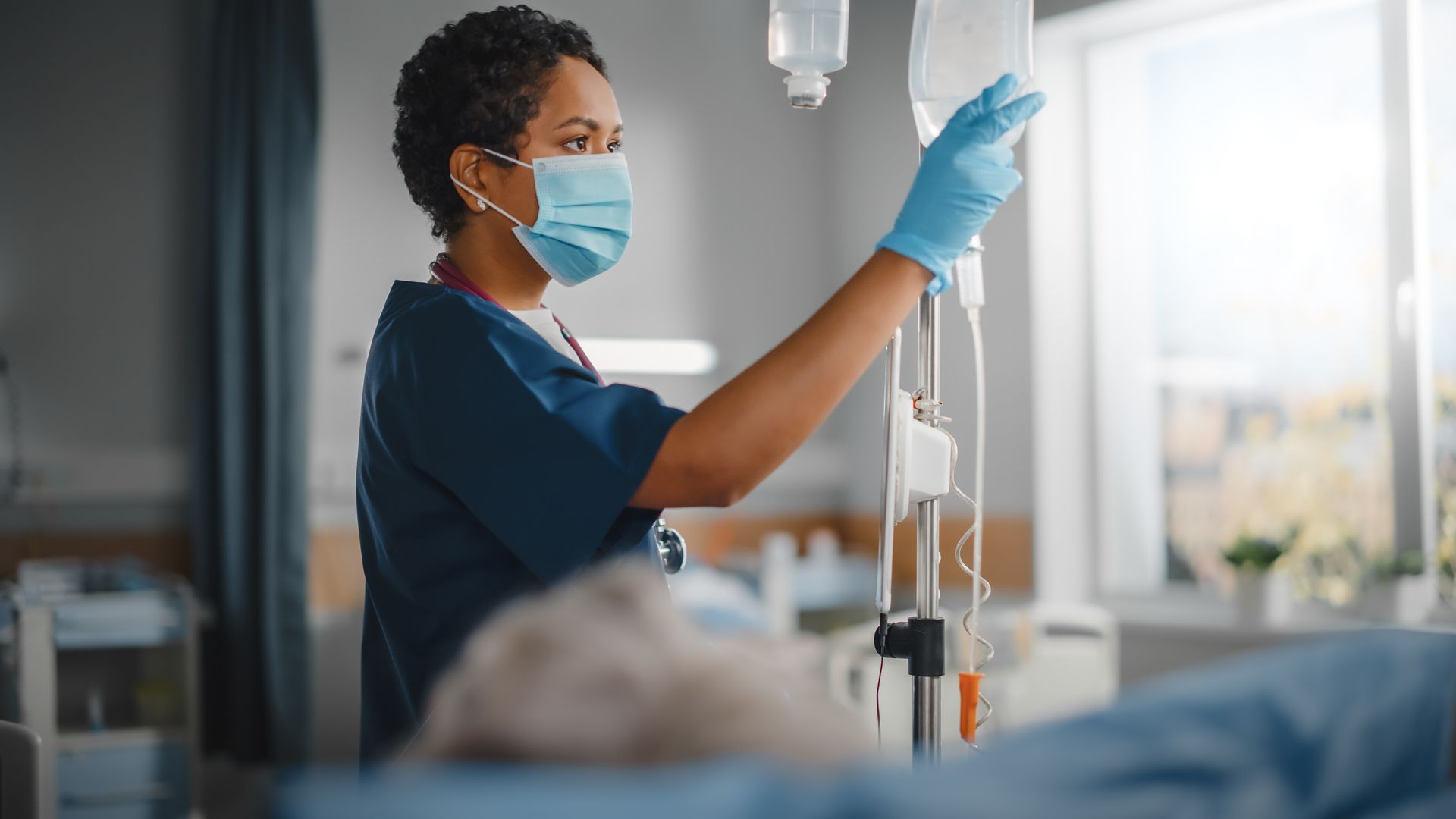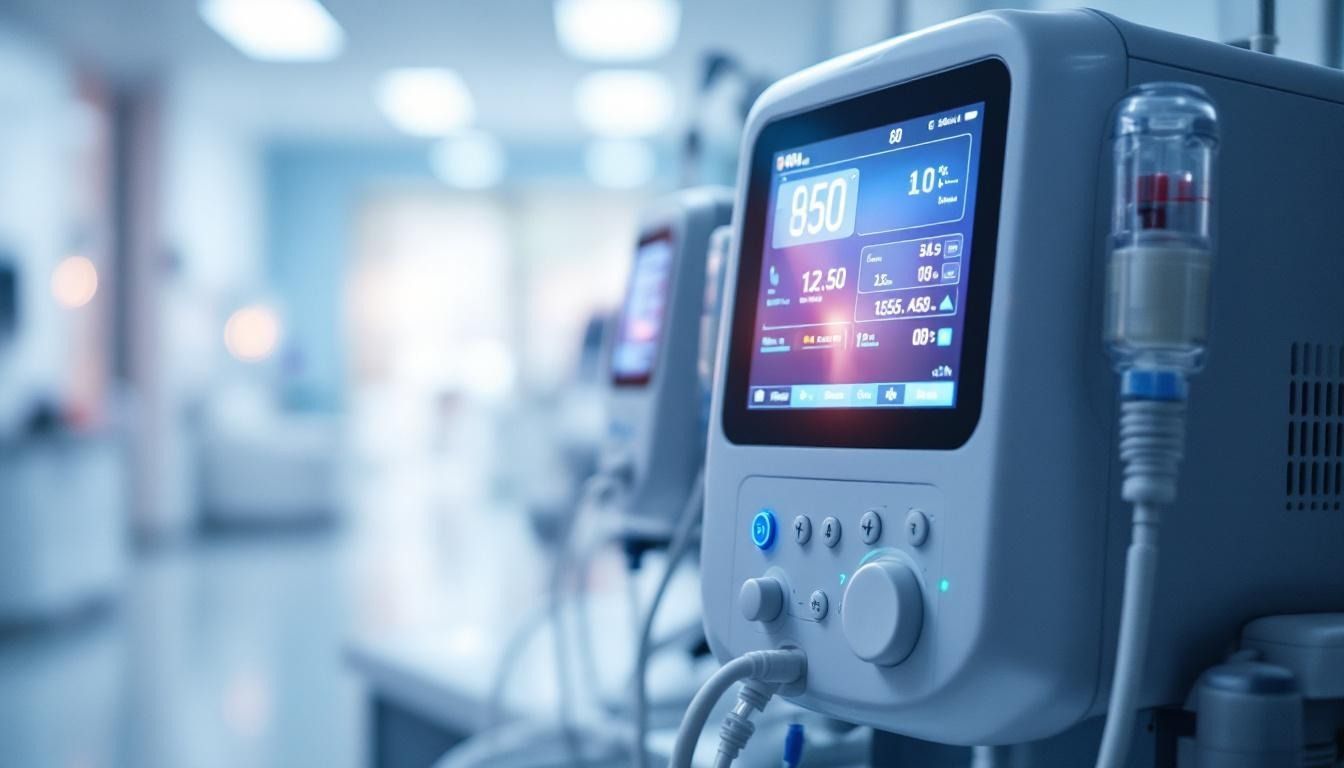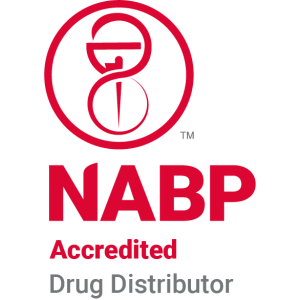How do sterile compounds reduce therapy side effects?

Unveiling the Role of Sterile Compounding in Therapy
In the expanding field of pharmaceutical compounding, attention has increasingly shifted to the role of sterile compounding in therapy. This specialized process is crucial for customizing medications to suit individual patient needs while minimizing potential side effects. As medication adherence and patient safety become ever more pressing concerns, understanding how sterile compounds are prepared and the inherent benefits they deliver is pivotal for patients, healthcare providers, and the compounding industry.
Understanding Sterile Compounding

What is sterile compounding?
Sterile compounding refers to the preparation of customized medications in a controlled, sterile environment. This method is crucial for creating injectable, infusible, or ophthalmic formulations, primarily for patients with specific medical requirements. These could include allergies to standard pharmaceutical ingredients or unique dosage needs that off-the-shelf medications cannot satisfy. It involves a meticulous process that includes strict sanitation protocols, specialized equipment, and clean rooms designed to prevent microbial contamination. Typically, only licensed pharmacists or healthcare professionals perform sterile compounding while adhering to guidelines from recognized authorities such as USP 797 and The Joint Commission.
Importance in preparing medications
The significance of sterile compounding lies in its role in enhancing patient safety and treatment efficacy. By precisely preparing medications in a contamination-free environment, sterile compounding minimizes the risk of infections and side effects. Compounded sterile preparations (CSPs) can be tailored to avoid allergens, adjust strengths, or simplify complex medication regimens, making them particularly beneficial for vulnerable populations, such as children and the elderly. This customization helps improve adherence and mitigates potential adverse effects from standard formulations that may cause complications.
Controlled environments and protocols
To ensure the safety of compounded medications, sterile compounding must occur in regulated environments, such as cleanrooms that meet the required air quality standards (ISO Class 5). The compounding process includes using personal protective equipment (PPE) and strict adherence to protocols designed to uphold sterility throughout preparation. Regular environmental monitoring and quality assurance practices are vital to ensure compliance with health and safety standards, further safeguarding patients from potential therapy-related side effects. Thus, sterile compounding is key to preventing contamination and protecting patients from infections or adverse reactions during treatment.
Types of Medications Requiring Sterile Conditions

What types of medications require sterile compounding?
Medications necessitating sterile compounding are predominantly those intended for administration via injection. This includes:
- Intravenous (IV) infusions : Used for providing fluids and medications directly into the bloodstream, requiring strict aseptic technique to prevent infections.
- Intraocular injections : Critical for eye conditions where sterile solutions must be used to prevent contamination of sensitive eye tissues.
- Intrathecal injections : Injections into the spinal canal where sterile preparations are crucial to avoid severe complications affecting the central nervous system.
Furthermore, compounded sterile preparations (CSPs) may be necessary for patients with unique health conditions that cannot be addressed by standard commercial formulations. This customization often includes tailored strengths, dosages, or formulations that align with specific patient needs, particularly in populations like children and the elderly.
Role in sensitive medical treatments
The procedures established in USP General Chapter <797> serve as a cornerstone in ensuring the safety and efficacy of medications requiring sterile compounding. These regulations cover a variety of practices essential to maintaining a sterile environment, including:
- Personnel training: Ensures that compounding pharmacists are knowledgeable about safe compounding practices.
- Facility design: Aims to maintain cleanliness and minimize contamination risks.
- Environmental monitoring: Regular checks to assure that conditions remain sterile.
- Quality assurance: Routine audits to ensure compliance with safety standards and prevent errors in preparation.
Adherence to these standards is critical in avoiding serious health complications associated with improperly compounded sterile medications. By following these guidelines, healthcare providers can help ensure that patients receive safe and effective therapies, ultimately reducing the risks of therapy-related side effects.
The Significance of Sterile Compounding

What is the importance of sterile compounding?
Sterile compounding is crucial because it ensures the safety and efficacy of medications that must be administered via sterile routes, such as injections or infusions. This process occurs in a clean-room environment, specifically designed to be free from microorganisms, which is essential to prevent infections and other severe complications that can result from using non-sterile products.
By employing strict adherence to guidelines such as USP <797>, compounding pharmacists follow rigorous protocols to maintain the integrity and purity of compounded sterile preparations (CSPs). This practice is vital for producing specialized medications tailored to individual patient needs, especially for populations like children and the elderly, who may have different dosing requirements or suffer from allergies to common ingredients in mass-produced medications.
Role in reducing infections and complications
Sterile compounding plays a significant role in mitigating the risk of infections that can lead to serious health complications. The meticulous process of creating CSPs involves validating sterility tests and using components that meet high-quality standards, thereby reducing the likelihood of contamination. Failures in sterility can lead to severe adverse effects, including infections from pathogens present in contaminated sterile preparations.
Tailoring medications
The ability to customize medications through sterile compounding allows healthcare providers to address specific patient needs effectively. Adjustments can be made not only in the strengths and dosages of medications but also in the formulation to exclude allergens, reducing the chances of adverse reactions. This flexibility enhances patient adherence and improves therapeutic outcomes.
In summary, sterile compounding is integral to delivering high-quality pharmaceutical care by ensuring that medications are safe, effective, and tailored to the individual needs of patients, ultimately safeguarding their health against potential therapy-related side effects.
Risks Associated with Sterile Compounding
What are the risks of sterile compounding?
Compounded sterile preparations (CSPs) present significant risks that can impact patient safety. Unlike FDA-approved drugs, which undergo rigorous testing for safety, efficacy, and quality, compounded medications are often crafted without the same level of scrutiny. Compounding pharmacies typically do not adhere to the stringent good manufacturing practices (GMP) set for conventional drug manufacturers. This can lead to serious consequences, such as contamination and inconsistencies in drug potency.
A critical concern surrounding sterile compounding is the potential for microbial contamination. Historical cases, such as the meningitis outbreak associated with contaminated steroid injections, illustrate the severe health crises that can arise from improper compounding practices. Inadequate oversight and varying regulations across states contribute to these risks, making it challenging to ensure consistent quality in compounded medications.
Additionally, healthcare practitioners have raised alarms regarding the reliability of compounded medications. They worry about inappropriate preparation techniques and the risks of under-dosing, which can drive adverse effects and contribute to complications like antimicrobial resistance. Such deficiencies underscore the urgent need for better regulatory frameworks and monitoring in the compounding sector.
The lack of testing compared to FDA-approved drugs
Unlike standardized pharmaceutical products, compounded drugs do not undergo the same rigorous testing processes. The variability in quality and formulation can lead to significant differences in therapeutic effectiveness and safety profiles. The United States Pharmacopeia (USP) does provide guidelines for compounding practices; however, adherence is inconsistent and not enforced uniformly across all compounding pharmacies.
Quality control measures, such as sterility testing and potency validation, are often prioritized at the discretion of the pharmacy, leading to inconsistencies. This lack of standardization directly impacts medications' efficacy and patient outcomes. Therefore, it is crucial for both patients and healthcare providers to consider these risks when evaluating compounded drugs, emphasizing the importance of utilizing FDA-approved medications whenever possible. The potential dangers of sterile compounding highlight the need for strict adherence to safety protocols in the development and dispensing of compounded sterile preparations.
Challenges with Compounded Medications
What are the problems with compounded medications?
Compounded medications can present several problems, primarily due to the lack of the rigorous FDA approval process that commercial drugs undergo. This absence of oversight potentially undermines their safety, effectiveness, and quality. One major concern is the risk of contamination; compounded drugs are not always prepared under controlled conditions, increasing the risk for patients.
There are also significant concerns regarding incorrect dosages. Since compounded medications are tailored to individual needs often without the standardization seen in FDA-approved drugs, variability in strength and formulation can lead to adverse outcomes. For example, compounding pharmacists must ensure sterility, and any lapse in procedure can directly result in patient harm, such as infections from contaminated preparations.
What health risks are associated with compounded medications?
Beyond the immediate risks of contamination, compounded medications are associated with a host of potential health risks. Patients may experience allergic reactions to ingredients not typically present in standardized medications, which can lead to severe side effects. Importantly, since compounded drugs do not undergo the robust testing that FDA-approved drugs do, the potential for adverse effects increases, including those stemming from impurities or incorrect formulations.
Moreover, variations in compounding practices can significantly amplify risks. Traditional pharmacy compounding may lack stringent regulatory oversight compared to outsourcing facilities governed by the FDA, leading to inconsistencies in quality. The final quality of compounded medications can fluctuate based on the facilities where they are prepared, making it crucial for patients to be informed and cautious.
With these challenges in mind, it is essential for consumers to consult healthcare providers regarding the use of compounded medications, ensuring that the potential risks and benefits are thoroughly assessed before proceeding. This is vital in minimizing exposure to adverse effects that could arise from improperly compounded drugs.
| Concerns with Compounded Medications | Impact | Recommendations |
|---|---|---|
| Lack of FDA oversight | Safety, effectiveness, and quality not guaranteed | Consult with healthcare providers |
| Risk of contamination | Potential infections and adverse reactions | Use only reputable pharmacies |
| Variability in dosages and formulations | Increased risk of side effects | Verify compounding practices \ |
| Allergic reactions | Severe health risks for sensitive patients | Assess ingredient sensitivities |
| Inadequate quality assurance | Inconsistent therapeutic outcomes | Regular audits and SOP adherence |
Enhancing Treatment Outcomes with Sterile Compounding

How can sterile compounding improve treatment outcomes?
Sterile compounding plays a vital role in improving treatment outcomes by allowing medications to be specifically tailored to meet the unique needs of individual patients. This customization includes modifications such as adjusting dosages, altering drug forms, and excluding allergens or unwanted ingredients. For instance, through sterile compounding, a liquid formulation may be prepared for children who struggle with swallowing pills, thereby enhancing medication adherence and reducing frustrations related to administration.
A primary benefit of sterile compounding is the adherence to stringent safety protocols that ensure the preparation of medications in a sterile environment. This is especially crucial for medications intended for injection, such as chemotherapy drugs, where contamination could lead to severe adverse side effects. By employing meticulous aseptic techniques and utilizing controlled environments with ISO Class 5 air quality standards, pharmacists can reduce the risk of infections associated with non-sterile preparations.
Automated compounding systems and barcode technology further increase the precision of medication preparation, significantly reducing the likelihood of human error. These innovations help ensure that patients receive exactly what they need without unwanted variations that could compromise therapeutic effectiveness.
Moreover, sterile compounding can address medication shortages by recreating essential therapies, maintaining treatment continuity for patients. Having the ability to reformulate existing medications while complying with regulations not only enhances drug availability but also safeguards patients against potential side effects from improper dosages.
How does sterile compounding improve patient compliance?
The flexibility of sterile compounding directly influences patient compliance. Customized medications can be developed to fit the specific requirements, such as age-appropriate formulations, thereby minimizing difficulties in administration. By providing medications in more convenient forms—like liquids or topical applications—patients are more likely to adhere to their prescribed therapies, leading to improved health outcomes.
Additionally, simplifying complex medication regimens through the combination of multiple medications into a single dosage form reduces the risk of errors or drug interactions that can complicate treatment plans. Streamlined doses help ensure that patients, particularly the elderly or those managing multiple medications (polypharmacy), can follow their treatment protocols more effectively.
In summary, sterile compounding significantly enhances treatment outcomes and patient compliance by allowing for tailored medications and ensuring their safe preparation in contamination-free environments.
Regulatory Landscape for Sterile Compounding
What are the regulatory guidelines governing sterile compounding practices?
The regulatory guidelines governing sterile compounding practices are primarily outlined in USP Chapter 797 . This chapter sets enforceable standards aimed at ensuring the safety and quality of compounded sterile preparations (CSPs). It categorizes CSPs into three risk levels: low, medium, and high. Each category dictates specific practices and environmental conditions required during compounding. For instance, high-risk preparations require more rigorous controls and testing compared to those classified as low risk.
Compliance with these guidelines is essential for pharmacies. Many states across the U.S. adopt USP 797 standards within their pharmacy practice regulations, ensuring that patient safety is prioritized. Additionally, federal laws such as the Drug Quality and Security Act of 2013 provide a framework for state regulations, particularly concerning outsourcing facilities that compound sterile preparations. This act enhances the oversight and safety profile of compounding practices, limiting potential risks associated with compounded drugs.
These comprehensive guidelines and regulations serve to prevent adverse events linked to inadequate compounding practices. Past outbreaks of infections and other severe complications have highlighted the importance of strict adherence to established standards, emphasizing that both state and federal mandates work together to safeguard public health.
What state and federal regulations govern sterile compounding?
In addition to USP Chapter 797, federal regulations under the Drug Enforcement Administration (DEA) and the Food and Drug Administration (FDA) coexist with state laws governing sterile compounding. For example, the FDA has specific regulations for outsourcing facilities, ensuring they comply with both safety and sterility standards when preparing CSPs. States may have their own unique mandates for pharmacies, which means that pharmacists must be vigilant about both federal and state regulatory frameworks.
Additionally, quality assurance practices , such as regular audits and staff training on aseptic techniques, are mandated to further solidify the safety of compounding practices. These measures are critical to maintaining the integrity of compounded medications, which directly impact patient safety and minimize the risk of adverse therapy side effects. Ultimately, a robust regulatory landscape fosters patient safety and enhances the quality of healthcare outcomes through meticulous compounding practices.
Impact on Patient Safety and Medication Adherence

What is the impact of sterile compounding on patient safety and medication adherence?
Sterile compounding plays a vital role in enhancing patient safety and medication adherence. By customizing medications to meet specific therapeutic needs, particularly for vulnerable populations such as children and seniors, sterile compounding ensures that treatments are acceptable and suitable for individual patients. This customization aids in boosting patient confidence and acceptance, which is essential for medication adherence.
However, the process of sterile compounding is not without its risks. Contaminations and compounding errors can lead to serious safety incidents and adverse patient outcomes. Compounded sterile preparations (CSPs) must adhere to stringent guidelines like USP <797> to prevent these risks. These guidelines outline necessary procedures and protocols to maintain drug sterility, thereby protecting patients from infection and other complications related to contamination.
To further improve safety, the use of automated systems in sterile compounding has shown a significant reduction in human error. This leads to heightened accuracy and safety of the prepared medications, which is crucial in reducing potential side effects. Quality assurance practices, including regular audits and personnel training on aseptic techniques, are vital in ensuring that CSPs maintain their integrity and purity.
Risks of contamination
Contaminated compounded drugs pose substantial risks, such as infections and hospitalizations. Historical cases have illustrated the dire consequences of compounded medications prepared in unsanitary conditions. For example, some patients have experienced severe adverse effects due to contaminated steroid injections. Adherent to best practices, compounding pharmacies must maintain controlled environments and strictly follow sterility protocols to minimize such risks.
Improving safety and adherence through protocols
The implementation of proper safety protocols not only enhances the sterility of medications but also builds patient trust in their treatment regimens. Compounding pharmacists are tasked with ensuring that all sterile components meet appropriate criteria for stability and sterility. This responsibility is crucial to prevent contamination and the associated adverse side effects.
In summary, while sterile compounding significantly enhances patient safety and medication adherence through tailored treatments and strict safety protocols, it is imperative to consistently monitor and uphold these standards. Continuous education for compounding personnel and adherence to regulatory frameworks are essential components in this equation, ensuring quality outcomes for patients receiving compounded therapies.
Customizing Medications through Sterile Compounding
Catering to specific patient needs
Sterile compounding plays a vital role in healthcare by addressing the unique requirements of individual patients. This practice allows pharmacists to prepare medications that cater specifically to different demographics, such as children and the elderly. Such customization includes altering dosages and formulations, like converting solid tablets to liquid forms suitable for those who have difficulty swallowing. This adjustment not only enhances drug administration but also improves patient adherence to treatment regimens.
By reformulating medications to eliminate allergens, compounding pharmacists ensure that patients who have sensitivities to certain ingredients can receive safe therapeutic options. This targeted approach allows for intricate considerations in drug strength or concentration, thus maximizing treatment effectiveness.
Reducing therapy side effects
The significance of sterile compounding extends to reducing the risk of side effects associated with standard drug formulations. Through meticulous preparation practices in controlled environments, compounded medications can minimize contamination risks. The United States Pharmacopeia (USP) guidelines facilitate this by ensuring quality and sterility in the preparation process.
Pharmacists can alter formulations to exclude harmful ingredients or allergens, significantly lowering the chance of adverse reactions. Furthermore, compounding allows the amalgamation of multiple medications into one dosage form, simplifying complex regimens which can often lead to errors or drug interactions.
Ultimately, sterile compounding enhances therapeutic efficacy and safety, providing patients with tailored medications that align with their specific health needs while reducing the potential for adverse side effects.
Innovative Approaches in Sterile Compounding
Technological advancements
Innovations in sterile compounding have transformed how pharmacists prepare medications, significantly enhancing patient safety and treatment efficacy. One of the major advancements is the introduction of automated systems, which have been proven to reduce human error rates dramatically. By minimizing manual involvement in medication preparation, these systems contribute to more accurate dosing and formulation, addressing issues like contamination risks inherent in traditional compounding methods.
Additionally, quality control has benefited from advancements in monitoring technologies, enabling real-time assessments of the sterility and potency of compounded sterile preparations (CSPs). These innovations ensure that the medications prepared meet stringent quality standards, thus safeguarding patients from potential adverse effects related to non-compliance.
Reducing human error and increasing safety
The integration of automation in the sterile compounding process not only decreases the likelihood of mistakes but also streamlines complex medication regimens. By allowing for the combination of multiple medications into a single custom formulation, automated systems enhance the clarity of treatment protocols. As many patients are at risk for polypharmacy complications, this simplification is crucial for enhancing adherence, particularly among vulnerable populations such as the elderly and children.
Moreover, strict compliance with regulatory standards such as USP <797> ensures that environments where compounding occurs are controlled and sterile. Regular training and proper use of personal protective equipment (PPE) are other critical factors reducing errors, helping to maintain patient safety and the overall effectiveness of therapies administered.
Addressing Polypharmacy and Complex Regimens
Simplifying medication regimens
Sterile compounding plays a critical role in simplifying complex medication regimens for patients, especially those who are elderly or have multiple health conditions. By enabling the combination of several medications into one dosage form, pharmacists can help reduce the chances of medication errors, drug interactions, and unnecessary side effects. For instance, elderly patients often face polypharmacy, where multiple prescriptions can lead to confusion and heightened risk of adverse effects. Compounding allows healthcare professionals to streamline these regimens, ensuring patients take their medicines more easily and effectively.
Improving compliance in elderly patients
Healthcare providers can enhance treatment adherence by tailoring compounded medications to meet the specific needs of elderly patients. For example, converting solid medications into liquid formulations can make them easier to swallow, thereby reducing the chances of missed doses. When compounded medications avoid common allergens and contain only essential ingredients, patients are less likely to experience adverse reactions, which can further motivate consistent use.
Additionally, according to USP <797> guidelines, compounded sterile preparations (CSPs) are created in sterile environments, ensuring that medications are free from contaminants that could lead to complications. The overall approach of sterile compounding addresses unique patient requirements, aiding in medication compliance and ultimately improving therapeutic outcomes.
| Topic | Description | Benefits |
|---|---|---|
| Simplifying Regimens | Combines multiple medications into a single form, reducing complexity. | Fewer errors, easier administration. |
| Improving Compliance | Customizes formulations for easier intake and excludes allergens to minimize reactions. | Better adherence, enhanced patient safety. |
Preventing Allergenic Responses and Sensitivities
Omitting allergens during compounding
Sterile compounding plays a vital role in preventing allergic reactions by allowing pharmacists to omit specific allergens from medications. For patients with known sensitivities to substances like lactose or gluten, standard formulations can pose significant risks.
By customizing medications, compounding pharmacists ensure that these harmful ingredients are excluded. This tailored approach significantly minimizes the risk of adverse reactions, leading to a safer and more effective treatment plan for individuals susceptible to allergies.
Improving dosage customization
Another advantage of sterile compounding lies in its ability to provide improved dosage customization. Many patients, such as children and the elderly, may struggle with standard dosages due to difficulties with swallowing pills or achieving proper dosing.
By reformulating medications to meet individual patient needs, pharmacists can create liquid formulations or adjust ingredient concentrations. This flexibility not only enhances patient compliance but also contributes to reducing the potential for side effects often associated with incorrect dosing.
For instance, compounded Atropine eye drops can be prepared in lower strengths, which may yield fewer side effects while effectively addressing conditions like myopia. Overall, the ability to tailor medications in sterile compounding facilitates better therapeutic outcomes while minimizing the risk of adverse effects attributed to allergies and improper dosages.
The Cleanroom Environment and Protocols
Maintaining Sterility
A critical component of sterile compounding is the maintenance of a cleanroom environment, which is specifically designed to be free of microorganisms. Compounding must occur in controlled spaces that meet strict cleanliness and sterility standards. Effective air filtration systems, like HEPA filters, are employed to ensure the air quality is optimal for preventing contamination.
Sterility is protected through rigorous protocols, including the use of aseptic techniques. Personnel are required to don appropriate garb, including gloves, masks, and gowns, to prevent any transfer of contaminants. Compliance with standards such as USP <797> mandates these practices to uphold sterility during medication preparation.
Role of Equipment and PPE
Equipment used in sterile compounding is essential for safeguarding sterility. Compounding hoods, such as laminar flow hoods or biosafety cabinets, provide a sterile environment where medications can be prepared safely.
Personal protective equipment (PPE) plays a vital role as well. PPE minimizes the risk of healthcare staff inadvertently contaminating sterile products during preparation. Training staff in the proper use of equipment and PPE is essential to ensure that best practices are followed, further enhancing patient safety by reducing the risk of adverse therapy side effects from contaminated medications.
Through these stringent protocols, sterile compounding can significantly mitigate the risks associated with compounded sterile preparations, promoting effective and safe patient outcomes.
Sterile Compounding in Pediatric and Geriatric Care
Adapting medications for specific age groups
Sterile compounding plays a critical role in adapting medications specifically for pediatric and geriatric patients. Children often face challenges with standard dosages, as they may be unable to swallow pills or require adjusted concentrations based on their age and weight. By reformulating medications into liquid forms or lower dosages, compounding pharmacists can ensure these treatments are more manageable and effective for young patients.
Similarly, older adults often deal with polypharmacy—taking multiple medications—which raises their risk for drug interactions and side effects. Customi













